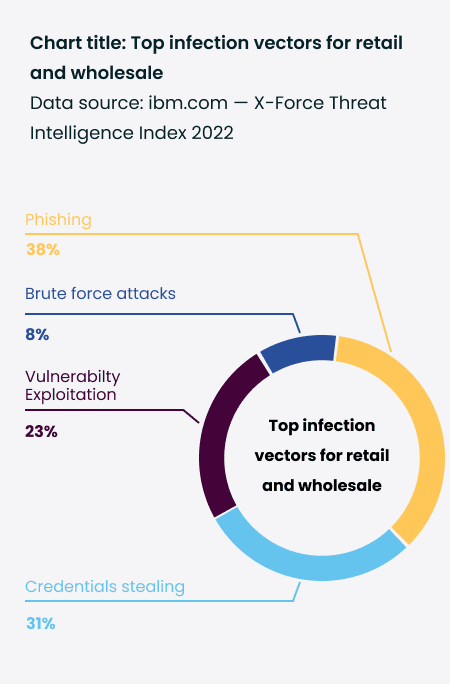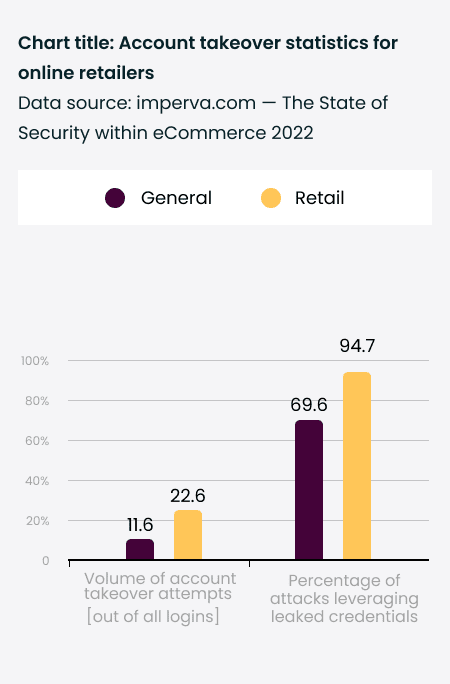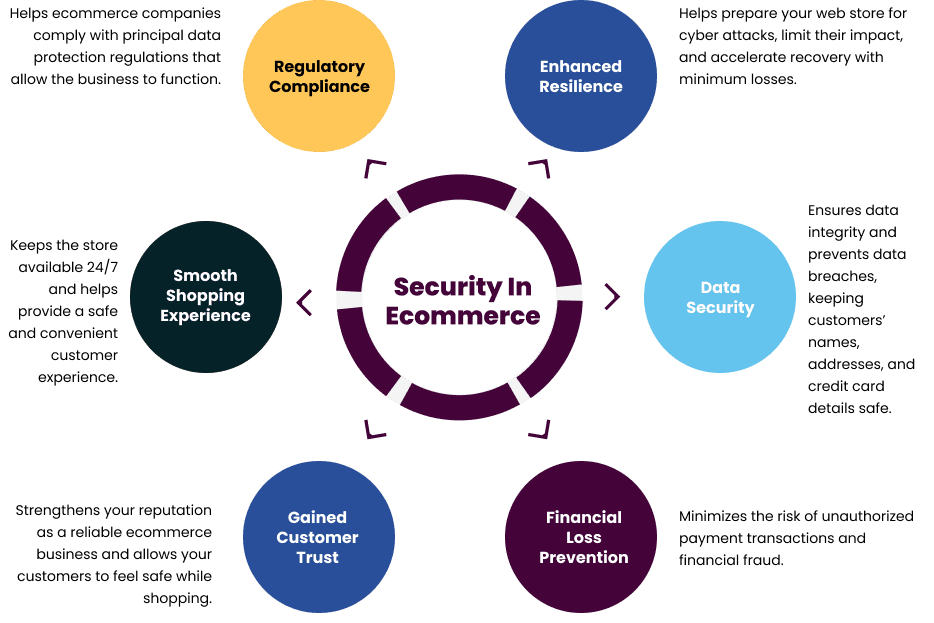What is ecommerce security?
Ecommerce security statistics


91%
of organizations reported at least one cyber incident over a year


98%
of all cyber attacks in retail have financial motives
Verizon


$41
Billion
of organizations reported at least one cyber incident over a year




Top 7 security threats for ecommerce


Looking for an effective cyber security solution?
Ecommerce security staples


A firewall
to filter website traffic and give access to trusted networks


HTTPS
to safely send information between a web browser and website


Anti-malware and anti-virus software
to detect and block Trojan horses, worms, and code tampering


Strong, unique passwords
to prevent unauthorized access to customer accounts


Backup data
to restore it in case of a failure or loss


Regular updates
to fix emerging vulnerabilities and prevent hackers from exploiting them


A secure payment gateway
to minimize credit card transactions risks


Role-based access
to prevent accidental modification of site configurations


Additional security plugins
to enhance your store’s security mechanisms
5 best practices for ecommerce security
According to Cisco’s 2022 Security Outcomes Report Vol. 3, MFA is the top initiative for improving security resilience in organizations.
So, to ensure that only authorized users can access ecommerce resources, retailers should:
1. Introduce MFA to protect their back-office accounts from hijacking and unauthorized access.
2. Offer front-office users the option to authenticate against their social accounts (Google, Facebook, etc.), so they can leverage existing MFA they already trust.
According to Cisco’s 2022 Security Outcomes Report Vol. 3, MFA is the top initiative for improving security resilience in organizations.
So, to ensure that only authorized users can access ecommerce resources, retailers should:
1. Introduce MFA to protect their back-office accounts from hijacking and unauthorized access.
2. Offer front-office users the option to authenticate against their social accounts (Google, Facebook, etc.), so they can leverage existing MFA they already trust.
According to Cisco’s 2022 Security Outcomes Report Vol. 3, MFA is the top initiative for improving security resilience in organizations.
So, to ensure that only authorized users can access ecommerce resources, retailers should:
1. Introduce MFA to protect their back-office accounts from hijacking and unauthorized access.
2. Offer front-office users the option to authenticate against their social accounts (Google, Facebook, etc.), so they can leverage existing MFA they already trust.
According to Cisco’s 2022 Security Outcomes Report Vol. 3, MFA is the top initiative for improving security resilience in organizations.
So, to ensure that only authorized users can access ecommerce resources, retailers should:
1. Introduce MFA to protect their back-office accounts from hijacking and unauthorized access.
2. Offer front-office users the option to authenticate against their social accounts (Google, Facebook, etc.), so they can leverage existing MFA they already trust.
According to Cisco’s 2022 Security Outcomes Report Vol. 3, MFA is the top initiative for improving security resilience in organizations.
So, to ensure that only authorized users can access ecommerce resources, retailers should:
1. Introduce MFA to protect their back-office accounts from hijacking and unauthorized access.
2. Offer front-office users the option to authenticate against their social accounts (Google, Facebook, etc.), so they can leverage existing MFA they already trust.
Why security in ecommerce is important


